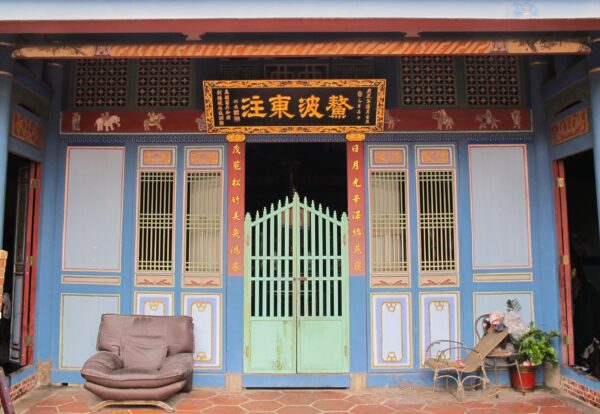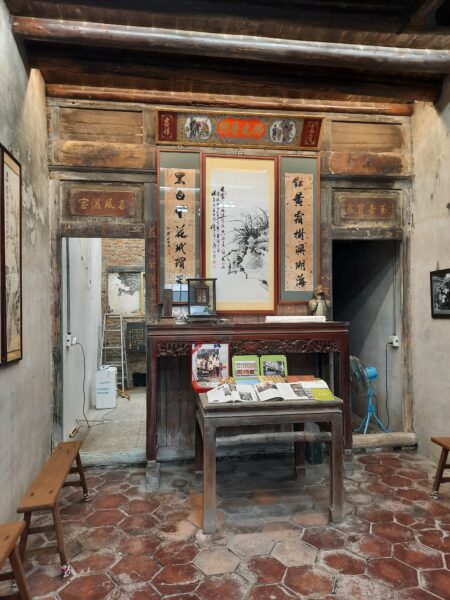Lukang | Taiwan

Two hundred years ago Lukang (often spelled ‘Lugang’) was Taiwan’s second-largest settlement. Every year, thousands of junks unloaded cloth and crockery in its harbour, then loaded up with rice and sugar for export to the Chinese mainland. The town’s merchants grew rich, endowed temples and founded schools.
After silting closed the port, Lukang found itself overtaken by newer towns such as Taichung. Since the 19th century, there’s been little impetus for modernisation, so much of old Lukang has survived, to the delight of the tourists who flock to this ‘living museum’ and true treasure-house of architecture, culture, and tradition.
Mansions and Museums
Ding Mansion is typical of the homes in which the town’s upper-class families lived in the late 19th century. Along with tasteful antique furniture, one of the clan’s most precious assets is displayed inside: An inscribed board bearing just two Chinese characters. These words signify that family scion Ding Shou-quan in 1893 passed the highest-level civil-service examination in the Qing Empire (which ruled Taiwan between 1684 and 1895), an achievement which brought the family massive prestige.
Interestingly, the Ding family were – like several other old households in Lukang – of Muslim origin. Because the town was a trading centre, it drew numerous settlers from the coast of Fujian, among them Arab and Persian merchants whose families had been living in China since the 13th century. Many were already well assimilated into Han society before relocating to Taiwan; once on the island and isolated from the large Muslim communities on the Chinese coast, they gradually lost their traditions. Lukang’s Islamic cemetery disappeared long ago and where a mosque once stood there’s now a typical Taiwanese temple. Even though they ceased practicing Islam some generations back, there are families in the neighbourhood who never include pork in ritual offerings to their ancestors, and who don’t eat pork during periods of mourning.
Lukang Folk Arts Museum is housed in another aristocratic residence – one that’s both much larger and very different in terms of architecture. Built during World War I as a residence for the Koo family, the exterior is French Baroque with Japanese influences. Inside, you’ll find Koo heirlooms including traditional clothing, musical instruments, and even a contract by which a man of modest background marrying the daughter of well-to-do townspeople promised his parents-in-law that any children from the marriage would bear his wife’s family name rather than his. (In Taiwan and China, this is a time-honoured way of ensuring that a surname doesn’t die out when there are no sons.) There’s little in the way of English-language labeling, but an experienced guide can make the history behind these items come alive. The Koo clan, by the way, are still very important in Taiwan’s business circles, owning major stakes in banking, cement, and other industries.
Wandering through Lukang is always fun. The central part of the town is is filled with twisting alleyways overflowing with antiquity, plus workshops where prize-winning artisans paint lanterns, make delicate hand-held fans, and carve religious icons. An entire day is barely enough if you’re visiting Taiwan as part of an in-depth private cultural tour.
Breathtaking Shrines
Lukang’s houses of worship are every bit as engrossing as those in Tainan, and are so close to each other they can be visited as part of a walking tour that incorporates the old streets. In addition to the two described below, several others have an interesting history, a special ambience, or unique decorations. Where can you see SpongeBob SquarePants and Mickey Mouse in a place of worship? Answer: Yuqu Temple, a shrine devoted to Marshal Tian Du, the god of the dramatists, stage performers, and temple-parade troupe members.
Longshan Temple, pictured at the top of this page, is the most famous and for very good reasons. Not to be confused with a shrine of the same name in Taipei’s Wanhua, isn’t simply the oldest Buddhist house of worship in Taiwan. It’s widely considered one of the most sublime relics anywhere on the island. Sensitively restored after a major earthquake in 1999, this 99-door, five-entrance complex boasts a remarkable octagonal ceiling. Decorated so mischievous demons would think the temple is underwater (and thus safe from their fire-starting antics), it’s a superb piece of art converging on a dragon’s face. Amid the tourists you’ll see plenty of genuine worshipers, most noticeably black-robed women busily praying to Guanyin, the goddess of mercy whose full name translates as, ‘she who hears all of mankind’s cries’.
Lukang’s Tianhou Temple is as raucous as Longshan Temple is tranquil, and it may just be the oldest shrine on Taiwan’s main island, possibly predating Koxinga’s eviction of the Dutch from their base further south. The object of veneration is Mazu, and one effigy of the sea goddess is said to have arrived here in the 1680s. If you prefer quieter places of worship, you’ll enjoy Chenghuang Temple, where the principal deity is the town’s divine patron and protective spirit. Local people occasionally ask the town god for help resolving cases of theft, as he’s said to have an impressive record when it comes to tracking down items stolen or lost. Not that you can expect to be needing his assistance: Taiwan is one of Asia’s safest destinations.

